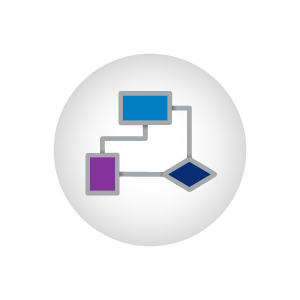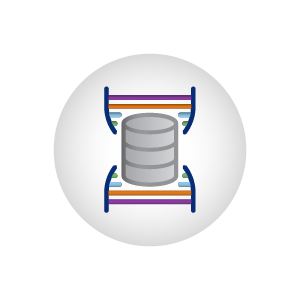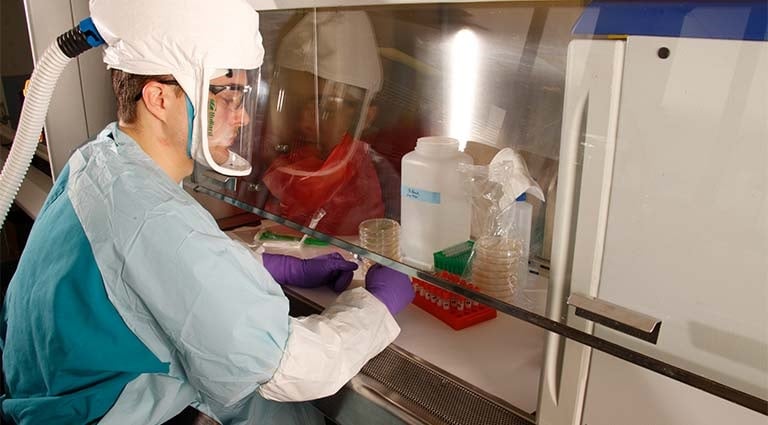UltraSEQ™ Advanced DNA Sequencing Threat Analysis
Rapid, Accurate Decisions for the Nucleic Acid Synthesis Industry and Beyond
When you need simple, high-confidence, actionable information from genomic data, UltraSEQ provides a secure, AWS Gov-Cloud-based system for the identification and characterization of biological threats based on highly curated data and logical, data-driven threat function and organism identification algorithms.
UltraSEQ Application: Produce Nucleic Acid Sequences Safely and Responsibly
UltraSEQ identifies and characterizes nucleic acid sequences of concern, including controlled sequences, quickly and accurately to protect against biosecurity risks.
How It Works
The UltraSEQ Threat Identification Algorithm rapidly scans a requested DNA sequence through the proprietary Sequence of Concern Database. In addition to identifying positive matches, the UltraSEQ algorithm provides information about the types of threats that a gene sequence may present by providing a report that flags and ranks each identified sequence of concern based on controlled status and threat status. UltraSEQ provides both per sequence analysis (e.g., nucleic acid screening) as well as per dataset analysis (e.g., metagenomics). Nucleic acid screening results help companies ensure compliance with HHS’s Screening Framework Guidance, the International Gene Synthesis Consortium’s Harmonized Screening Protocol, Export Control Regulations, and the Federal Select Agent Program.

Threat Identification Algorithm
The Threat Identification Algorithm rapidly triages information, automating the screening process in minutes.

Sequence of Concern Database
The robust database is made up of more than 10,000 sequences of concern comprising 100% of bacterial human/zoonotic agents and > 70% of human/zoonotic agents.

Actionable Information
Easy-to-read reports quickly assign an accurate risk level and control status to detect DNA sequence threats.
The UltraSEQ Advantage
Standardization with Enabled User Flexibility
- Individual, user-focused, and logical sequence triage
- Confidence tuned to custom level of tolerance
- Adaptable to sequencing hardware and non-cloud-based application
Explainable, Efficient Results
- Machine and human-readable, science-backed information
- Trusted, interpretable answers through verbose API reports and a Graphical User Interface.
- Novel threat detection, including chimeras and genetically engineered threats
Unrivaled Performance
- Non-reliance on agent blacklists
- Trace and course-level taxonomy explorations
- Rapid sample analysis and sequence triage
Featured Experts
-
Craig Bartling, Ph.D.
Data ScientistCraig’s background is in biochemistry, but his scientific expertise spans many areas, such as genomics, proteomics and protein characterization, and molecular biology. He is a recognized leader in biological data curation, with particular emphasis in data pertaining to biological threats and genetic engineering. -
André LaFreniere
Vice President, Commercial Business Development & Sales, Battelle HealthAndré LaFreniere leverages his 20+ years of experience in healthcare technology to advance opportunities and solve challenges in the world of health. Andre is focused on collaborating with commercial clients across pharma, medical devices, diagnostics, and healthcare systems to solve complex problems and change healthcare for the better.
Related Solutions
-
 solution
solution
Therapeutics, Prophylaxis and Diagnostics
Battelle operates the world’s largest non-governmental containment laboratories that help clients deliver life-saving diagnostic and therapeutic solutions for victims of chemical and biological warfare or pandemic diseases. -
 solution
solution
Biosecurity and Pandemic Preparedness
Our Biomedical Research Center conducts secure, state-of-the-art research, development, testing, and evaluation to enable proactive biosecurity preparedness critical to our national security, economic strength, and the well-being of people. -
 solution
solution
Precision Public Health
Battelle delivers the right intervention, to the right population, at the right time. Our interdisciplinary team of public health experts, data scientists and molecular geneticists improve health outcomes while promoting health equity. -
 solution
solution
Chemical Agent Countermeasures
Battelle is a global leader in understanding the impact of chemical agents on our national security. Our experts execute the most thorough testing procedures and processes available under stringent quality management systems, providing guiding insights for the most important decisions.